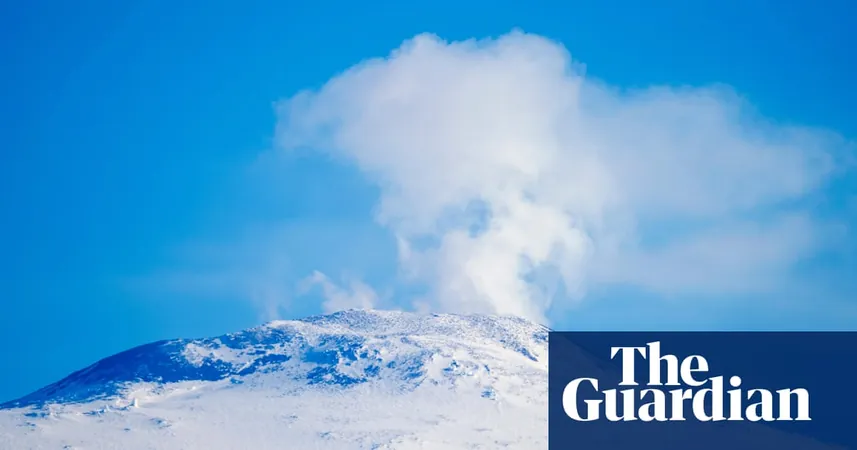
Melting Ice Caps: Potential Sparks for Volcanic Eruptions!
2025-07-07
Author: Jessica Wong
Could Climate Change Trigger Volcanic Chaos?
In a startling revelation, scientists warn that the ongoing melting of glaciers and ice caps due to climate change might lead to a surge of explosive volcanic eruptions across the globe.
A Powerful Connection Revealed
As glaciers recede, the immense pressure on underground magma chambers diminishes, paving the way for potential eruptions. This intriguing phenomenon has been observed in Iceland, but new research from Chile stands out as one of the pioneering studies illustrating a historical increase in volcanic activity on continents after the last Ice Age.
West Antarctica: A Volcanic Hotspot?
The researchers pointed to West Antarctica as a critical zone, home to over 100 volcanoes lurking beneath the thick ice. With global temperatures on the rise, the likelihood of losing this ice cover in the not-so-distant future looks grim—posing a significant threat of volcanic activity.
The Double-Edged Sword of Eruptions
Volcanic eruptions can initially cool the Earth by releasing particles that reflect sunlight. However, sustained eruptions would unleash a wave of greenhouse gases, such as carbon dioxide and methane, which could exacerbate global warming. This could send us spiraling into a dangerous cycle: melting ice leads to more eruptions, which in turn results in increased global temperatures.
Insights from the Andes
Led by Pablo Moreno-Yaeger from the University of Wisconsin-Madison, the research team camped amongst the majestic Andes, studying both active and dormant volcanoes. They focused particularly on Mocho-Choshuenco, where advanced radioisotope dating methods were utilized to shed light on volcanic activity before, during, and after the last Ice Age.
Understanding the Ice's Role
The results were telling: the glacier cover, about 1,500 meters thick, suppressed volcanic eruptions between 26,000 and 18,000 years ago, leading to a massive build-up of magma just beneath the surface. With the ice melting around 13,000 years ago, the pressure on the magma chamber was released, causing explosive eruptions and significant geological changes.
A Global Phenomenon?
Moreno-Yaeger emphasized that this eruptive phenomenon is not exclusive to Iceland. He suggested that similar volcanic increases may be expected in Antarctica and other parts of the world, including regions of North America, New Zealand, and Russia. The implications are vast, and the urgency for scientific exploration in these areas has never been greater.
History Repeats Itself?
Previous studies have shown that global volcanic activity surged two to six times after the last Ice Age. Yet, the Chilean study provides a crucial glimpse into understanding the mechanisms driving these changes, making it a significant contribution to climate and volcanic science.
What Lies Ahead?
As we continue to confront the realities of climate change, the potential for volcanic eruptions to complicate the picture grows. Could we be on the brink of a volcanic era triggered by our melting ice caps? Time will tell, but the stakes have never been higher.





 Brasil (PT)
Brasil (PT)
 Canada (EN)
Canada (EN)
 Chile (ES)
Chile (ES)
 Česko (CS)
Česko (CS)
 대한민국 (KO)
대한민국 (KO)
 España (ES)
España (ES)
 France (FR)
France (FR)
 Hong Kong (EN)
Hong Kong (EN)
 Italia (IT)
Italia (IT)
 日本 (JA)
日本 (JA)
 Magyarország (HU)
Magyarország (HU)
 Norge (NO)
Norge (NO)
 Polska (PL)
Polska (PL)
 Schweiz (DE)
Schweiz (DE)
 Singapore (EN)
Singapore (EN)
 Sverige (SV)
Sverige (SV)
 Suomi (FI)
Suomi (FI)
 Türkiye (TR)
Türkiye (TR)
 الإمارات العربية المتحدة (AR)
الإمارات العربية المتحدة (AR)